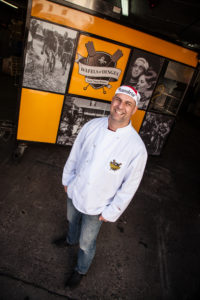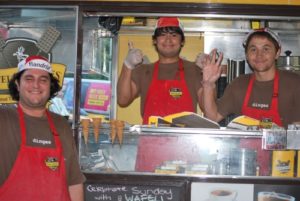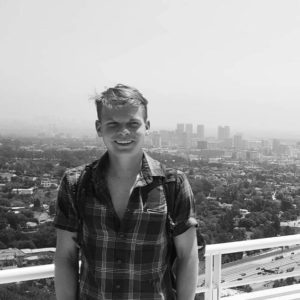Thomas DeGeest was a worker for IBM for 12 years before he decided he was called to do something else. Thomas left his day job and started to pursue his dream job of owning his own business where he is now serving waffles to the streets of New York City. Originally, Thomas was from Belgium and moved to the states in 1997. Waffles and Dinges has now become such a huge hit in New York City, and Thomas has created over 100 jobs. The annual revenue for W&D is $5 million. The business is open 7 days a week and for at least 14 hours each day. Originally Thomas and his wife were thinking of moving to Brazil, where they thought they may be able to open up there business idea there. However, Thomas did not speak Portuguese and they ended up not moving to Brazil. Now the mission of the company is to not just make waffles, but to make it be the customers best part of their day. The waffle recipe is straight from Belgium and Thomas stated that he will never sell frozen waffles. 
Originally the company was ran out of a mobile truck serving waffles. This became an issue due to the cost of maintaining the truck and the traffic is hard to maneuver through in New York City. This led Thomas to pivot and tow his business behind his car, and then led to buying actual stores for a home base. Thomas stated, “If you really want to run a food-truck business, realize your most important asset is your vehicle.” He goes further to explain how the truck is running 18 hours per day on Friday, Saturday and Sunday.
Thomas has grown such a successful business, and he his interviewed on CBS Magazines where he gives his input to other immigrants on how they can grow a successful business, using themes from the country of origin. 

















